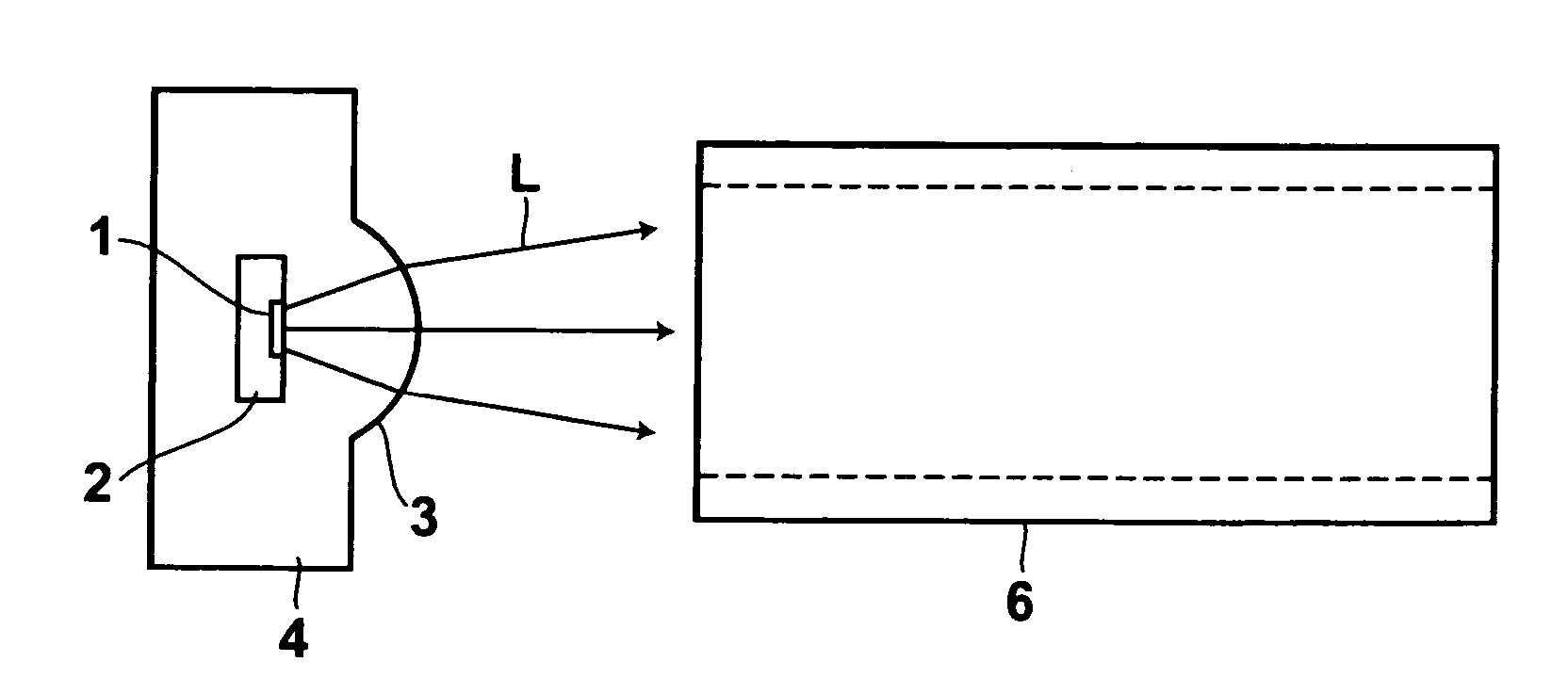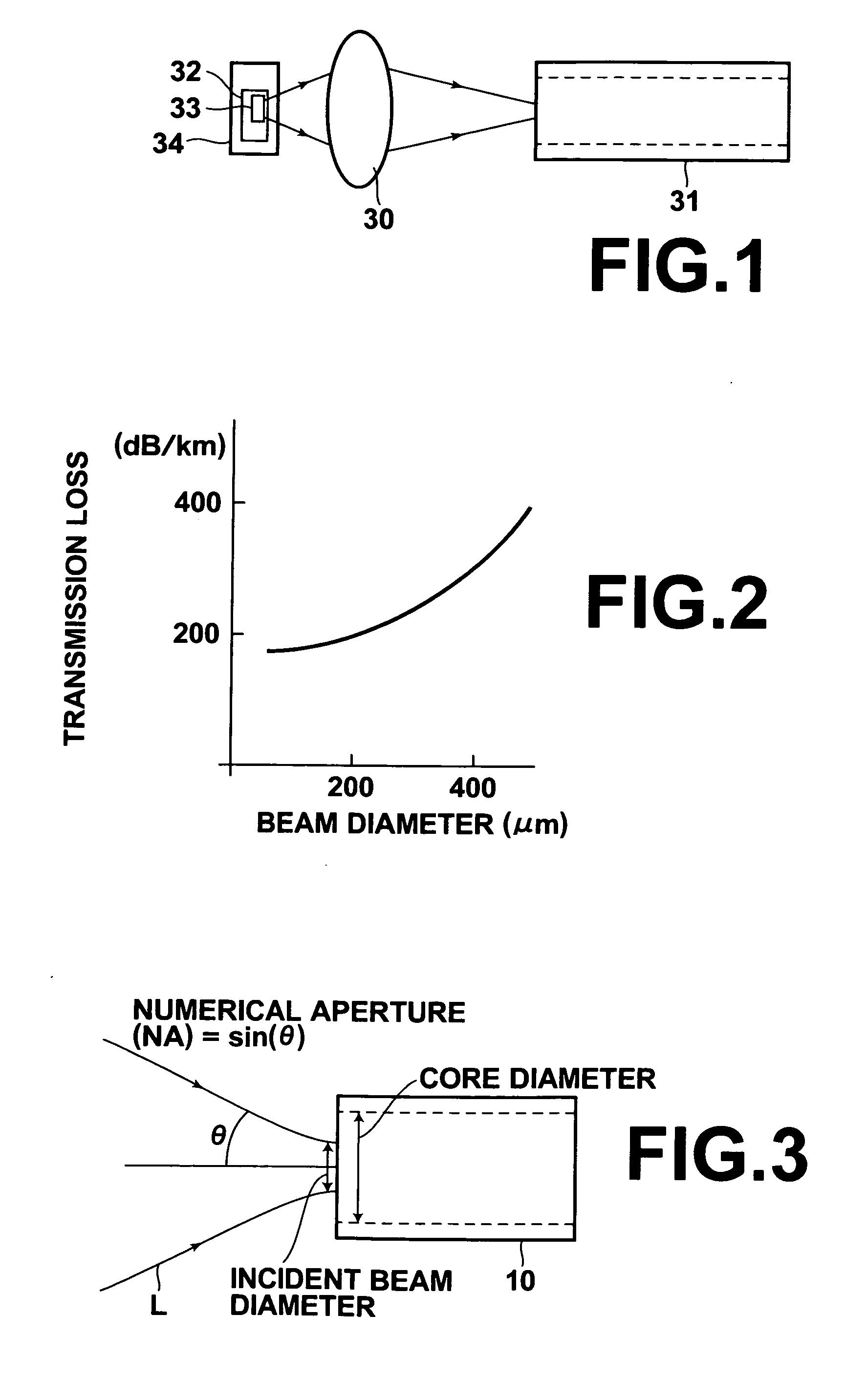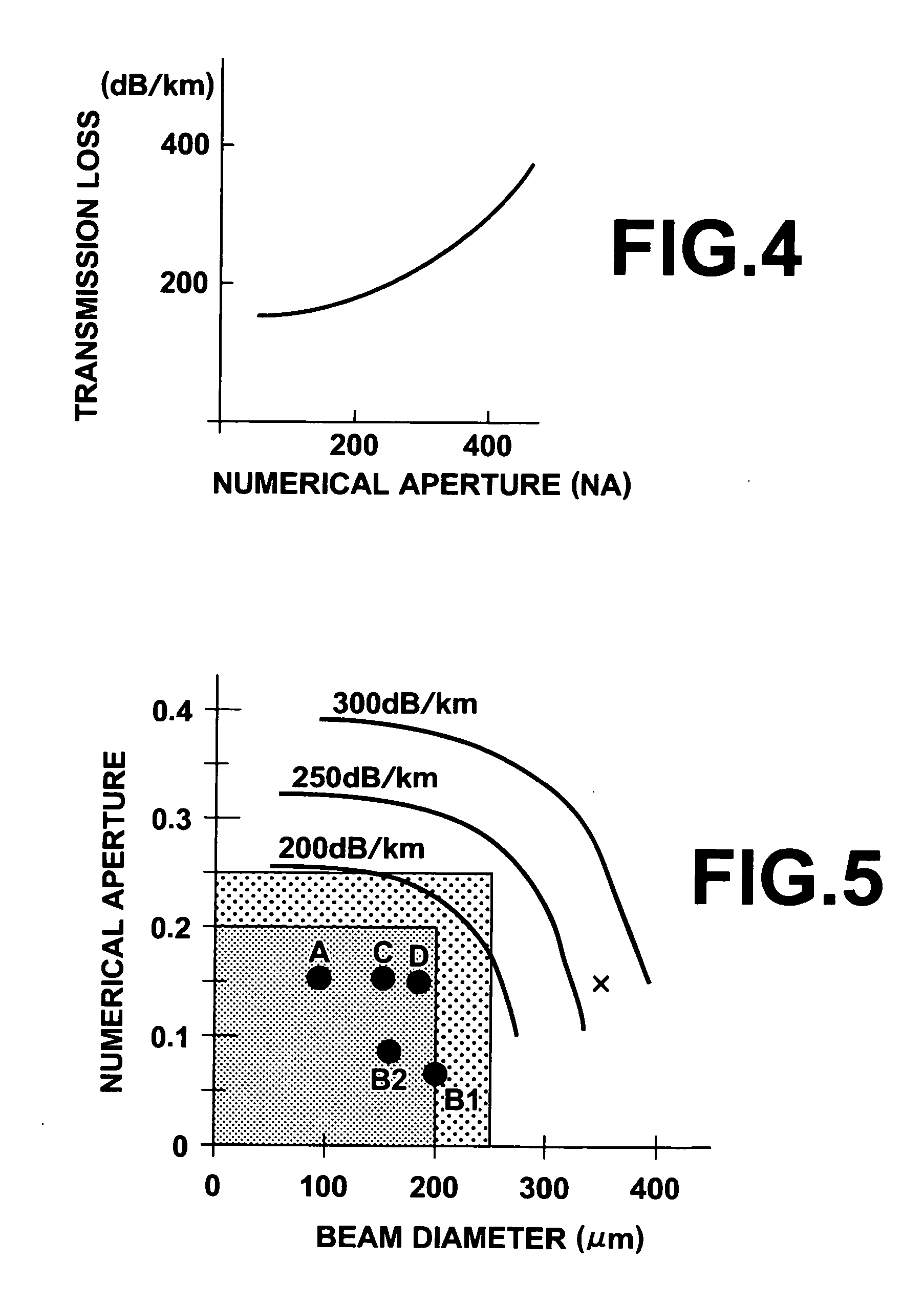Optical communication system
- Summary
- Abstract
- Description
- Claims
- Application Information
AI Technical Summary
Benefits of technology
Problems solved by technology
Method used
Image
Examples
case 1
[0033] Use of a Semiconductor Laser Having a Single Luminous section (Edge Emitting Type or VCSEL)
[0034] For the light source that may be deemed as an ideal point light source, such as a semiconductor laser that emits light from a single spot, the design target values described above may be achieved with relative ease. Firstly, the diameter of the luminous section of the semiconductor laser of edge emitting type or VCSEL is less than or equal to 20 μm, and the divergence angle of the light beam emitted from the luminous section expressed in terms of numerical aperture is less than or equal to 0.6 at most. Hereinafter, the divergence angle of the light beam emitted from the light source expressed in terms of numerical aperture is also referred to as “emission NA”, and the divergence angle expressed in terms of numerical aperture of the light incident on the input face of the optical fiber is also referred to as “incident NA”. Further, the average beam diameter of the light at the in...
case 2
[0038] Use of an Array VCSEL Constituted by a Plurality of Luminous Sections
[0039] For a VCSEL having a plurality of luminous sections, it is necessary to take into account the distance between the luminous sections. Supposing the case in which a four spot array VCSEL having luminous sections 20 on the surface of a square shown in FIG. 6 is used here. If the spot distance is 50 μm, the distance along the diagonal line is 70 μm. If the diameter of each of the luminous section is 10 μm, the VCSEL should be deemed to be an equivalent to the light source having a maximum outer dimension of 80 μm. If the emission NA of the array VCSEL 21 is assumed to be 0.3, an incident beam diameter of 160 μm, and an incident NA of 0.15 may be achieved by using an optical system of 2× magnifying power. This result falls well within the optimum region (point C in FIG. 5).
case 3
[0040] Use of RC-LED
[0041] In this case, aRC-LED having a luminous section with a diameter in the range from 50 to 100 μm is generally selected in view of reliability. That is, a smaller diameter of the luminous section results in an unfavorably excessive current density. Accordingly, the diameter of the luminous section may be considered in the same way as in the case 2 where a semiconductor laser having a plurality of luminous sections is used as the light source. If the diameter of the luminous section of the RC-LED is assumed to be 100 μm, and emission NA is assumed to be 0.3, an incident beam diameter of 180 μm and an incident NA of 0.17 (approximately ½ of the emission NA) may be achieved by using an optical system of 1.8× magnifying power. This result falls well within the optimum region (point D in FIG. 5).
[0042] Hereinafter, a more specific embodiment will be described. FIG. 1 is a schematic block diagram of the optical communication system according to the present embodi...
PUM
 Login to View More
Login to View More Abstract
Description
Claims
Application Information
 Login to View More
Login to View More - R&D
- Intellectual Property
- Life Sciences
- Materials
- Tech Scout
- Unparalleled Data Quality
- Higher Quality Content
- 60% Fewer Hallucinations
Browse by: Latest US Patents, China's latest patents, Technical Efficacy Thesaurus, Application Domain, Technology Topic, Popular Technical Reports.
© 2025 PatSnap. All rights reserved.Legal|Privacy policy|Modern Slavery Act Transparency Statement|Sitemap|About US| Contact US: help@patsnap.com



